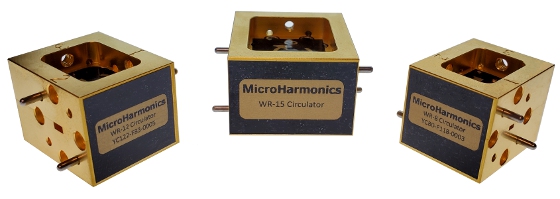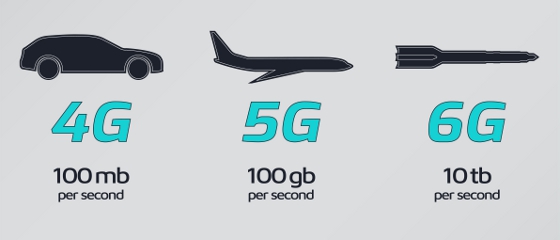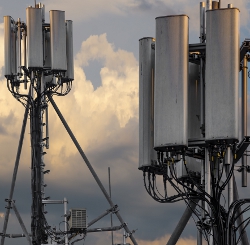 |
| November 02, 2021 | Volume 17 Issue 41 |
Designfax weekly eMagazine
Archives
Partners
Manufacturing Center
Product Spotlight
Modern Applications News
Metalworking Ideas For
Today's Job Shops
Tooling and Production
Strategies for large
metalworking plants
Advanced circulators overcome mmWave design challenges
Greater isolation and bandwidth enable telecom providers and radar technology designers to fully capitalize on the mmWave spectrum.
As communications providers race to deliver on the potential of 5G, research and design projects are already looking toward 6G and beyond. The promise of ultra-fast broadband speeds -- potentially as much as 10 gigabits per second (Gbps) -- can catapult cellular technology into new markets like smart cities, connected vehicles, defense, and the rapidly expanding IoT. However, a major hurdle awaits the impending move up the millimeter wave (mmWave) spectrum -- a lack of acceptable mmWave components such as circulators.

Circulators from Micro Harmonics offer a wide bandwidth, overcoming a major challenge at mmWave frequencies.
"It is an enormous technical challenge we are facing," says Fred Daneshgaran, a California State University, Los Angeles, professor who specializes in RF design, telecommunications, and quantum communications. As such, Daneshgaran is frequently brought in as lead technician on some of the most cutting-edge RF military and telecom projects.
"The only way to support the billions of users at higher data rates is to keep utilizing higher and higher frequency bands, so components are going to have to catch up," says Daneshgaran. "The problem is, however, as you go up the spectrum it gets harder and harder to build critical components like circulators that can operate at those frequencies."
Moving on up
The higher end of the 5G spectrum (26 GHz to 86 GHz) will provide much of the leap forward in data speeds, capacity, quality, and reduced latency. However, at such frequencies the design of transmit/receive components becomes critical. Without advancements, the deployment of systems capable of operating even higher on the spectrum -- within the terahertz realm (100 GHz to 10 THz) where 6G and 7G will operate -- is also in jeopardy.

The promise of ultra-fast broadband speeds -- potentially as much as 10 Gbps -- is challenged by current mmWave components.
Recognizing that national security could be affected, in late 2020 the Department of Defense announced $600 million in awards for 5G experimentation and testing. Given this impetus, microwave components such as antennas, waveguides, isolators, and circulators are now being developed that are capable of broadband operation at mmWave frequencies up to 330 GHz and beyond.
"One component that is especially critical to telecom infrastructure is the circulator," Daneshgaran explains. "Antenna systems capable of both transmitting and receiving a signal are typically expensive because they are reciprocal devices. To keep the signals separated, you have to put something like a circulator at the front end. Otherwise, you'd need two different antennas."
Basically, a circulator is a three-port device in which power entering any port is transmitted to the next port in rotation. Hence, any signal that goes into port 1, goes out port 2, and any signal coming in port 2, goes out to port 3.
This issue of duplexing at mmWave frequencies is not only problematic for telecom applications, but also for radar technology, which relies on circulators to separate the signal on the transmission path from the signal on the receiving side.
Overcoming performance challenges
In a recent effort to design and build an R&D system for a major commercial contractor, the lack of a circulator capable of operating at 120 GHz stopped Daneshgaran's team in its tracks.
"Theoretically, you can design one, then simulate its performance, and it will be fine. However, actually making them is more of an art than a science," explains Daneshgaran. "It is just very hard to build circulators at the mmWave range."
"At first, we couldn't find anybody that was capable of producing circulators in the frequency band we required, much less with the high isolation and wide bandwidth we wanted," he says.
In a continued search for a circulator with the necessary attributes, Daneshgaran and his team learned of Micro Harmonics, who had developed a circulator for mmWave systems while working with NASA on a number of SBIR projects.

The only way to support the billions of users at higher data rates is to keep utilizing higher and higher frequency bands. mmWave components are going to have to catch up.
Micro Harmonics Corporation specializes in components for mmWave applications and successfully developed an advanced line of circulators operating from 25 GHz up to 150 GHz.
"Micro Harmonics fine-tuned the design to meet the performance characteristics we needed within the very precise band we were going to be operating on," explains Daneshgaran.
Whether it's for high-speed data transmission and reception, or for target detection, isolation is a key parameter.
"If the circulator doesn't have good port-to-port isolation, you get self-interference; meaning the signal I'm trying to transmit is interfering with the signal I'm trying to receive," he adds. So, you want as much isolation as possible."
"The Micro Harmonics circulators demonstrated some pretty awesome isolations," says Daneshgaran. "At the frequency we operated on, we realized almost 30 dB of port-to-port isolation, which is a lot. Typically, it is very hard to even get above 20."
A circulator must also offer a wide bandwidth, a major challenge at mmWave frequencies.
"For telecoms, the more bandwidth you have, the more data you can support," says Daneshgaran. "This is because your data rate is directly proportional to the amount of bandwidth you have around your carrier frequency."
Daneshgaran says that in a radar application, wide bandwidth is important because it involves continuous frequency sweeps. The larger the bandwidth, the easier it is to discern a target in a given sweep.
In Micro Harmonics' case, increased bandwidth for its circulators is achieved by abandoning complicated dielectric impedance-matching elements in favor of a mechanical engineering solution. This makes the performance highly repeatable from one assembly to the next.
"With these circulators, we are getting a clean 'couple of gigahertz,' if not more, of bandwidth within the characteristic limits of 30-dB isolation we seek for our application," says Daneshgaran. "If we were willing to accept something like 20 dB of port isolation, we could have four or more gigahertz of bandwidth, which is very significant."
"Because of the initial delays in finding workable mmWave components, we really needed to jump in and make several measurements that we had fallen behind on," concludes Daneshgaran. "With the implementation of advanced circulators, our machine has been running continuously ever since we set it up, and we could not be more pleased with the results."
Source: Micro Harmonics Corporation
--------------------------
SIDEBAR: NASA-funded sensors test 5G cellular systems
Instruments aboard Earth-observation aircraft and satellites, such as spectrometers, take measurements in wavelengths of a few millimeters or smaller. NASA's Jet Propulsion Laboratory (JPL) in Southern California needed isolators that worked with these wavelengths to conduct spectrometer experiments. However, existing isolators maxed out slightly above 100 GHz -- about a 3-mm wavelength -- and caused a high level of signal loss.
Under a Small Business Innovation Research (SBIR) contract with JPL, the team at Micro Harmonics in Fincastle, VA, developed a hand-built Faraday rotation isolator that could work at much higher frequencies and at higher power levels. They realized the solution was in the materials.
Typical isolators use a long, magnetized ferrite core, which is responsible for most of the signal loss. Micro Harmonics shortened this core to its minimum possible length and tuned the magnetic field, significantly reducing the signal loss. The company also replaced the thermally insulating support washers used to suspend the ferrite in the waveguide with a diamond disc, which channels heat away from the resistive layer.
They were able to get the low-loss isolators to work at 100 GHz, and subsequent developments achieved frequencies in excess of 330 GHz. Now, Micro Harmonics is seeing interest from universities and laboratories around the world. Because new high-speed cell phone bandwidths are in the millimeter range, it is important to test how these frequencies behave in several environments. Corporate telecommunications labs testing 5G networks need analyzer equipment outfitted with these extreme isolators to make sure the new systems function properly. Micro Harmonics has already sold their technology to analyzer manufacturers like Keysight.
To read this article and other interesting NASA Spinoff articles, go to https://spinoff.nasa.gov/. The full article for this particular item can be found on page 7 in PDF form at https://spinoff.nasa.gov/sites/default/files/2020-12/NASA_Spinoff__2021.pdf.
--------------------------
Published November 2021
Rate this article
View our terms of use and privacy policy
